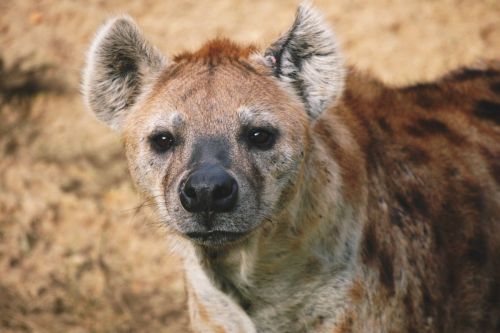The American mink is a species common in North America, where it lives in the wild. It was introduced to Europe in the 1950s and spread throughout Eurasia. It was imported as a fur animal, but some of it escaped from breeding and settled on our continent. The mink can adapt perfectly to any conditions. It hunts on land, climbs trees, and swims. It feeds on birds, fish, amphibians, mammals, and invertebrates - it is a very voracious species.
Mustelids and martens (Mustelidae) are the most numerous family of predatory mammals, including small and medium-sized animals. They have a slender body and short legs and are perfectly adapted to a predatory lifestyle in various environments. The mustelid family includes about 60 species, including weasels, martens, otters, minks, and badgers. They are closely related to pandas, skunks, and raccoons. Mustelids are very efficient and persistent hunters, some are bred for fur, and others are kept as pets.
Some researchers believe that the appearance of the American mink on our continent was the cause of a significant decline in the European mink population. According to others, it replaced the previously exterminated European mink.
About 20.000 were probably released then into the wild, and they spread rapidly.
Many of them managed to escape from the farms and were released by various environmental organizations. By the end of the 1990s, the American mink managed to colonize almost the entire territory of Poland.
Local populations of some birds and mammals have been destroyed. The expansion of the American mink is probably responsible for the population decline, including coot and muskrat.
The head is small and quite flat, and the toes of the hind legs are webbed. Males differ in size from females (the upper size ranges are for males and the lower for females). Body weight, depending on gender, ranges from 0.7 to 1.3 kg.
The fur is usually brown and the chin is white.
The farm produced over 200 colorful varieties of mink. They include white, black, brown, yellow (so-called palomino), silvery-blue, and "velvet", which is characterized by short, silky hair.
Mink breeding is prohibited in many countries, including Switzerland - although they have never been bred there, Austria, and Great Britain.
During the day, they stay in earthen burrows up to 3 m long, which they have dug themselves. It also happens that they do not dig their burrows, but occupy existing ones, or settle in low-lying hollows or uprooted trees (overturned trees with torn roots).
The size of the territory depends on the sex, males have areas of up to 440 ha, and females 8-20 ha.
They are quiet animals that rarely make sounds.
Mink fur does not get wet thanks to the layer of air that creates insulation.
After a gestation period of approximately 40-80 days, usually 2-3 young are born at the end of April or in May. The young are born in a nest lined with hair, feathers, and dry plants. After 6 weeks of life, the young are already partially independent, and in the fall the mother leaves them.
Minks live for 4 to 6 years.
Their menu includes small mammals (hares, muskrats, shrews), frogs, arthropods, insects, fish, birds, and bird eggs.
A mink can swim to an island and kill up to a hundred chicks in one night. A single individual can thus decimate a colony of several thousand birds.
It is a source of palmitoleic acid, which has properties similar to human sebum. For this reason, it is used in cosmetics and medical products. It is also used to preserve various types of leather. Mink oil is resistant to UVA and UVB ultraviolet radiation, does not cause allergies does not turn rancid, and is used for the production of perfumes and soaps.












